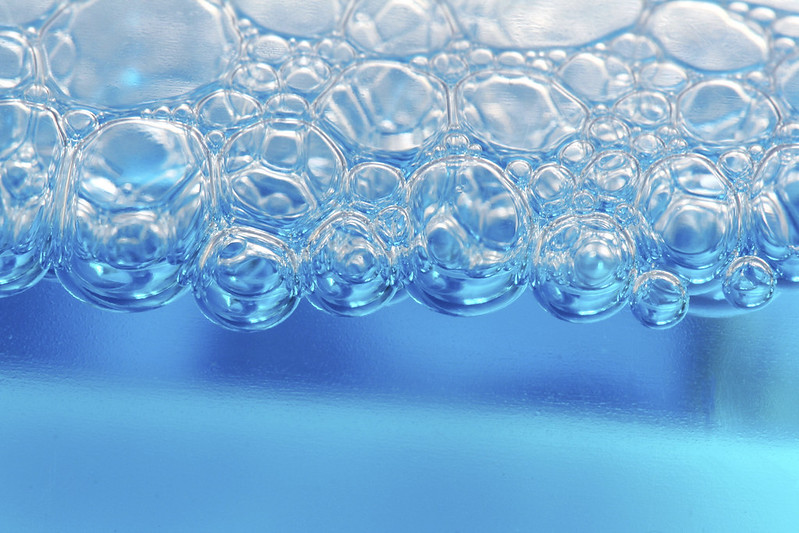The Role of Defoamers in the Chemical and Food Processing Industries
The Duty of Defoamers in Enhancing Product Top Quality and Performance
Defoamers serve as important ingredients that mitigate this problem, ensuring smoother production workflows while improving the visual and functional characteristics of the final items. The selection of the ideal defoamer can be essential to achieving ideal outcomes, raising crucial questions regarding formula compatibility and efficiency metrics that warrant additional expedition.
Comprehending Defoamers
Recognizing the duty of defoamers is essential for preserving product high quality throughout different sectors. Defoamers are chemical additives designed to protect against the formation and minimize of foam in fluid systems, which can adversely influence procedures such as mixing, filling, and surface tension. Frothing can bring about inefficiencies, item issues, and compromised aesthetic charm, making defoamers a critical component in producing procedures.
In industrial applications, defoamers aid to improve item uniformity and security. The reliable use of defoamers not only guarantees smoother manufacturing procedures however also contributes to exceptional product performance.
Moreover, the option and formula of a defoamer should straighten with certain application demands, such as compatibility with other components, performance under differing temperature and pH problems, and potential governing restraints. Ultimately, understanding defoamers' features and their value in numerous formulations is essential for enhancing production and guaranteeing the best quality end products.
Sorts Of Defoamers
Defoamers can be categorized right into a number of kinds based upon their make-up and device of action. The primary kinds consist of silicone-based, non-silicone natural, and not natural defoamers.
Silicone-based defoamers are among the most efficient, mainly due to their capacity to spread rapidly on the liquid surface and interfere with foam development. Their one-of-a-kind chemical structure enables remarkable security, making them suitable for high-temperature applications and environments with varying pH levels.
Non-silicone organic defoamers, frequently made up of all-natural oils or fats, are valued for their biodegradability and reduced toxicity. These are typically utilized in food and drink applications where security and environmental effect are extremely important.
Inorganic defoamers, which include substances like talc or calcium carbonate, act by raising the thickness of the fluid, consequently lowering foam stability. They are commonly made use of in industrial procedures where compatibility with other materials is not a concern.
Each type of defoamer has distinct benefits and restrictions, enabling for tailored solutions depending upon the certain lathering problems experienced in various applications. Understanding these differences is crucial for optimizing efficiency and accomplishing preferred product quality.
Applications Throughout Industries
Many markets leverage defoamers to improve item top quality and operational efficiency. In the food and drink market, defoamers are important in processes such as developing and dairy products production to avoid foam formation, which can cause ineffectiveness and product incongruity. By regulating foam, makers can guarantee better yield and a more consistent item.
In the pharmaceutical industry, defoamers play an essential role in the solution of liquid drugs, where excessive foam can impede mixing and precise dosing. Their usage assists maintain the honesty of the formulations and promotes smoother production processes.
The paint and finishings sector likewise depends on defoamers to improve the performance of items during application. By lessening foam, these additives make sure a smoother coating and enhance the visual qualities of the final item.

Benefits of Using Defoamers
While the application of defoamers varies across industries, their advantages regularly boost item high quality and process efficiency. One significant benefit is the decrease of foam development during producing processes, which can otherwise cause manufacturing delays and variances in product quality. By decreasing foam, defoamers allow a smoother flow of products, promoting extra efficient procedures and minimizing the probability of equipment breakdowns.
Furthermore, the use of defoamers can enhance the appearance and appearance of end products. In markets such as coverings, paints, and food processing, too much foam can compromise the visual aesthetic appeals and overall top quality, while the suitable defoamer application ensures an uniform finish and preferable qualities. Furthermore, defoamers can add to set you back financial savings by reducing waste throughout production and maximizing using raw materials (defoamers).

Selecting the Right Defoamer
Selecting the right defoamer is essential for enhancing manufacturing procedures and making certain item top quality. The option of defoamer affects not just the effectiveness of foam control but additionally the total efficiency attributes of the end product. Factors to think about consist of the kind of application, the chemistry of the solution, and the ecological conditions under which the product will certainly be used.
Different industries might need particular defoamer types, such as silicone-based, organic, or polymeric defoamers. Comprehending the compatibility of the defoamer with the main ingredients is important to avoid damaging reactions that can jeopardize Full Article product integrity. In addition, the defoamer's efficiency in numerous temperature levels and pH levels must be examined to guarantee consistent performance.
Evaluating the Visit This Link defoamer in small applications can offer beneficial insights into its efficiency and suitability. Factor to consider of regulative conformity, especially in food, pharmaceuticals, and cosmetics, is vital in selecting a defoamer. Eventually, a comprehensive evaluation of these elements will certainly lead to the choice of a defoamer that not just regulates foam efficiently yet also improves the top quality and efficiency of the end product.
Final Thought

In final thought, defoamers are necessary ingredients that substantially enhance product top quality and efficiency throughout numerous markets. The calculated selection and application of defoamers lead to cost financial savings, enhanced resource use, and increased customer fulfillment.
Lathering can lead to inefficiencies, item flaws, and jeopardized aesthetic allure, making defoamers a critical part in producing operations.
